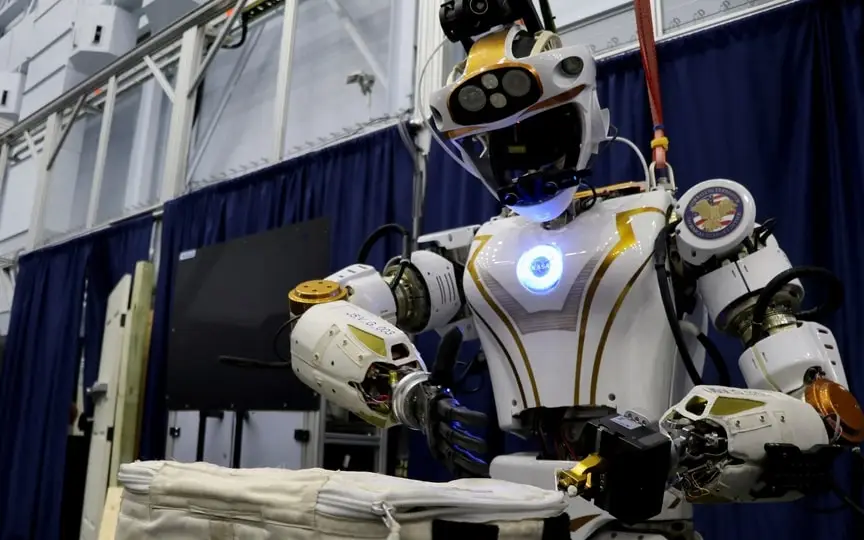Introducing Valkyrie: NASA’s humanoid robot paving the way for human-like robots in space
NASA’s Valkyrie, a towering humanoid robot measuring 6 feet 2 inches (188 centimeters) in height and weighing 300 pounds (136 kilograms), is currently undergoing testing at the Johnson Space Center in Houston, Texas. Named after a prominent female character from Norse mythology, Valkyrie is specifically engineered to function in hazardous or compromised human-made settings, such as regions affected by calamities, as stated by NASA.
But robots like him could also someday operate in space.
A humanoid robot resembles a person, typically having a body, a head, two arms and two legs. Engineers believe that with the right software, humanoid robots will eventually be able to act like humans and use the same tools and equipment.
Shaun Azimi, head of NASA’s Dexterous Robotics team, said humanoid robots in space could potentially handle risky tasks, such as cleaning solar panels or inspecting malfunctioning equipment outside the spacecraft, so astronauts can prioritize research and discovery.
“We’re not trying to replace crews, we’re really just trying to take the boring, dirty, dangerous work off their plates so they can focus on those higher-level operations,” Azimi said.
NASA is working with robotics companies such as Austin, Texas-based Apptronik to learn how humanoid robots developed for terrestrial purposes could benefit future humanoid robots destined for space.
Apptronik is developing Apollo, a humanoid robot whose mundane tasks include working in warehouses and manufacturing facilities moving packages, stacking pallets and other supply chain tasks. The company plans to start delivering humanoid robots to companies in early 2025.
Apptronik CTO Nick Paine said Apollo has clear advantages over humans, particularly durability.
“Our goal is to have this system online 22 hours a day,” Paine said. “It has a replaceable battery, so you can work for four hours, change the battery and then go on very quickly.”
Apptronik CEO Jeff Cardenas said the sky’s the limit as new software and developments improve Apollo’s capabilities.
“The approach is that we start with the warehouse and the manufacturing floor, but then it can move into retail … delivery and more into what we call unstructured spaces,” Cardenas said.
According to Azim, in the coming years these “unstructured spaces” may include space.
“Robots like Apollo are designed with modularity in mind so they can adapt to many applications,” Azimi said. “And that’s where NASA is really trying to get that insight — to see what are the key gaps that we would need to invest in in the future to bring a terrestrial system into the space environment and be certified to operate in space.”




